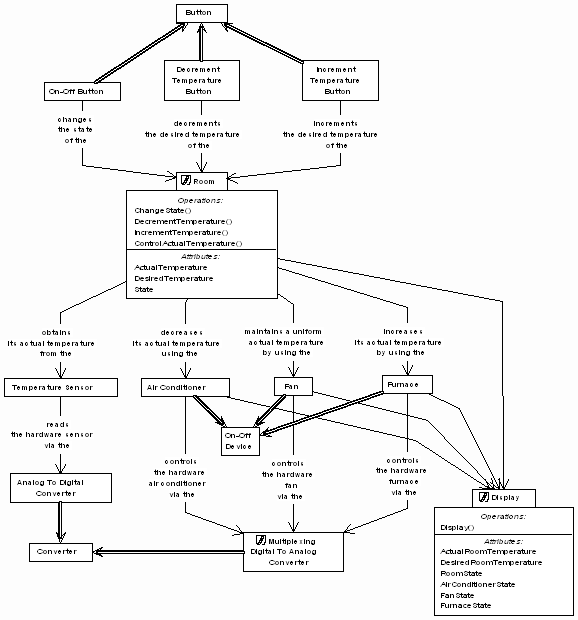
Example Digital Thermostat Class Diagram
A class diagram is a design diagram work product that primarily documents a cohesive collection of collaborating classes and types (interfaces) and the definitional and referential relationships between them.
The typical objectives of a class diagram is to:
The typical benefits of a class diagram are to:
The typical contents of a class diagram are:
The typical stakeholders of a class diagram are:
Class diagrams can typially be started if the following preconditions hold:
The typical inputs to a class diagram include:
Class diagrams are typically constrained by the following conventions:
The following class diagram documents the software classes
of a digital thermostat application. It uses the OML notation,
a valid variant of the UML notation. Single line arrows
represent relational relationships, and double line arrows
represent inheritance relationships. The shield with the two
parallel lines represents a concurrent class that is
thread-safe.

Compare this diagram with the corresponding context diagram to see how the direction of referential (i.e., dependency and control flow) reverses at the software hardware boundary. Also compair this diagram with the corresponding domain object diagram to see how this diagram shows more classes and more detailed information about these classes (e.g., operations and attributes rather than responsibilities).